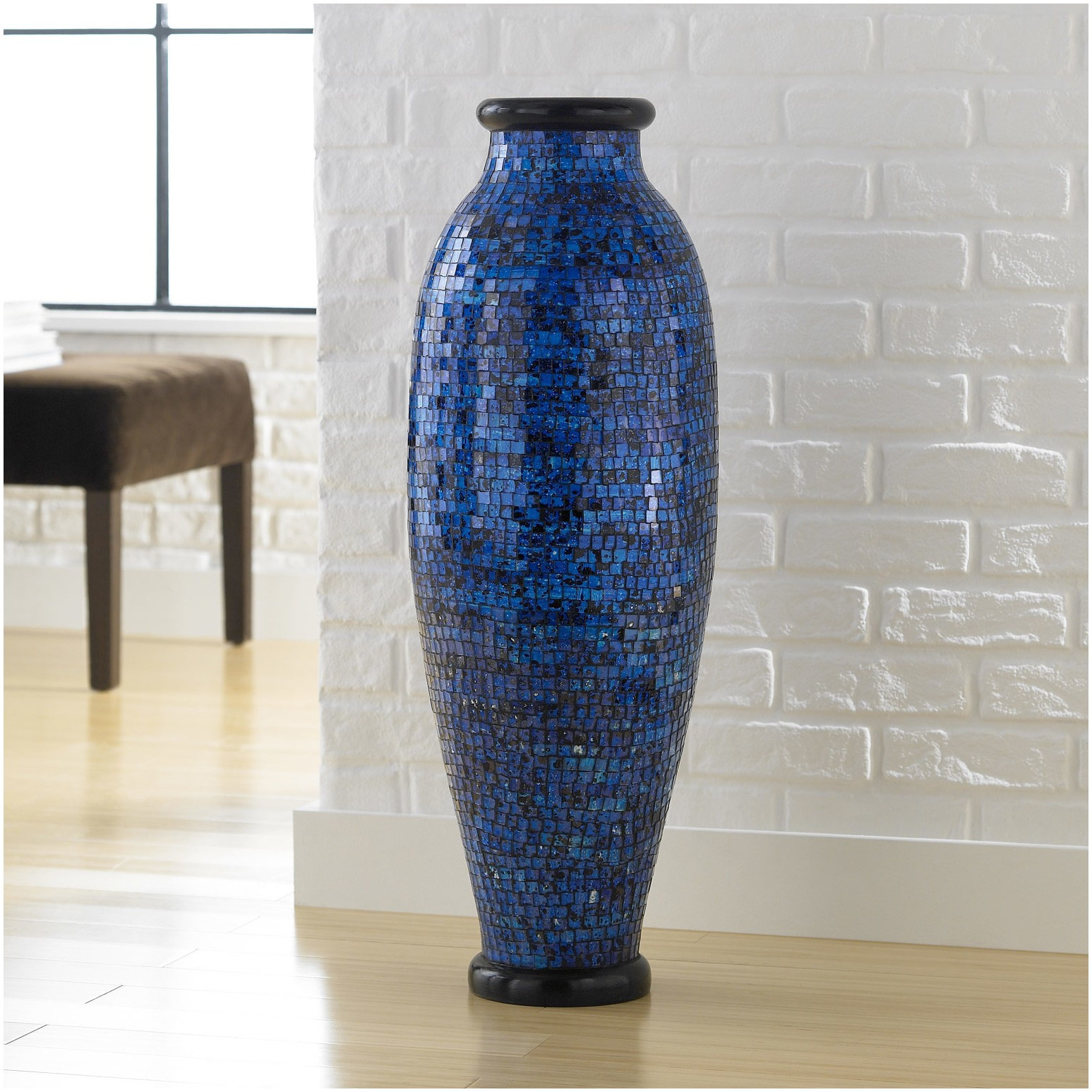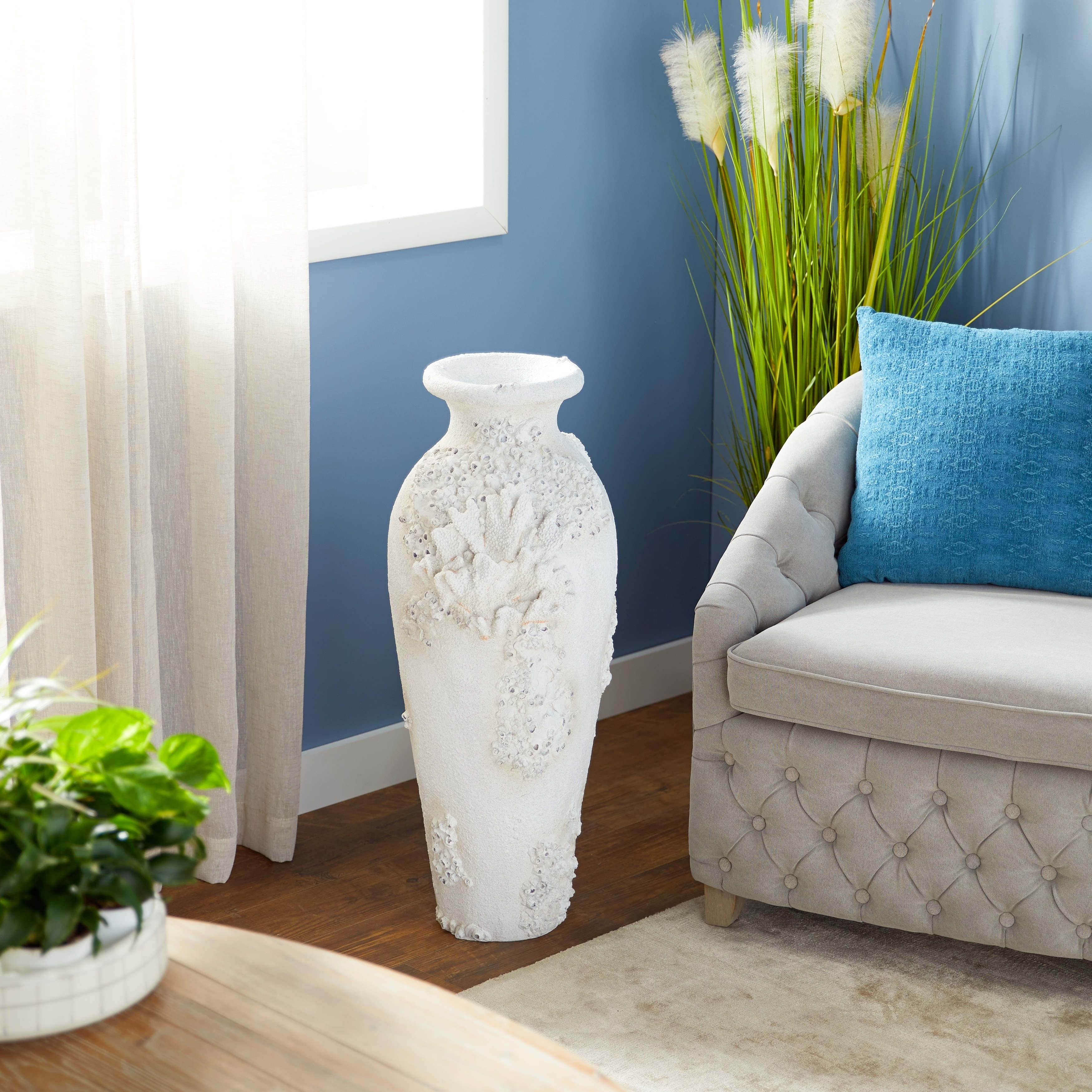Design Elements and Styles: Large Vases

Large vases, with their imposing presence and aesthetic appeal, have been a staple in interior design and decor for centuries. These vessels come in a myriad of shapes, sizes, patterns, and textures, each reflecting the influence of different historical periods and cultural traditions.
The shape of a large vase is a primary design element that can significantly impact its overall appearance. Common shapes include:
–
- Urn-shaped: A classic shape with a bulbous body and a narrow neck.
- Amphora-shaped: A tall, two-handled vase with a pointed base.
- Columnar: A tall, cylindrical vase with a simple, clean design.
- Globular: A round, spherical vase with a wide opening.
The size of a large vase is another important consideration. Oversized vases, standing at heights of several feet, can make a bold statement in a room, while smaller vases can be used to add a touch of elegance to a tabletop or shelf.
Patterns and textures are also key design elements in large vases. Geometric patterns, such as stripes, chevrons, and damask, add a modern touch to these vessels. Floral patterns, on the other hand, evoke a more traditional or romantic aesthetic. Textures, such as glazed, matte, or textured surfaces, can create visual interest and add depth to the design.
The evolution of large vase designs has been influenced by a variety of historical and cultural factors. In ancient Greece, vases were often decorated with scenes from mythology or everyday life. During the Renaissance, Italian potters created vases with intricate floral and geometric patterns. In the 19th century, Chinese vases became popular in Europe, inspiring a wave of Chinoiserie designs.
Today, large vases continue to be popular decorative pieces, available in a wide range of styles to suit any taste. Whether used as a standalone statement piece or as a complement to other decor elements, a well-chosen large vase can elevate the beauty and sophistication of any space.
Materials and Techniques

The construction of large vases involves a range of materials and techniques, each contributing unique characteristics to the final product.
The choice of material significantly influences the overall appearance and durability of the vase. Ceramic, glass, metal, and wood are among the most commonly used materials.
Ceramic, Large vases
Ceramic vases are crafted from clay, a versatile material that can be molded and shaped into intricate designs. After molding, the clay is fired at high temperatures, resulting in a durable and non-porous surface. Ceramic vases are known for their rich colors, intricate patterns, and ability to withstand heat and moisture.
Glass
Glass vases are created by melting silica and other materials at high temperatures. The molten glass is then shaped using various techniques, such as blowing, casting, or molding. Glass vases are transparent or translucent, allowing light to pass through and illuminate their contents. They are often decorated with intricate engravings, colors, or patterns.
Metal
Metal vases are constructed from metals such as copper, brass, or stainless steel. These vases are durable and resistant to corrosion. They can be shaped and hammered into various forms, creating unique and eye-catching designs. Metal vases often feature intricate engravings, textures, or patina finishes.
Wood
Wood vases are crafted from various types of wood, such as mahogany, oak, or walnut. Wood vases offer a natural and organic aesthetic. They are often carved, turned, or joined to create unique shapes and textures. Wood vases are susceptible to moisture and require proper sealing to prevent damage.
Techniques
The creation of large vases involves various techniques, including molding, casting, glazing, and firing.
Molding
Molding is a technique used to shape clay or other materials into the desired form. A mold is created, and the material is pressed or poured into it, taking on the shape of the mold.
Casting
Casting involves pouring molten glass or metal into a mold. The material solidifies within the mold, creating a replica of its shape.
Glazing
Glazing is a process of applying a thin layer of glass to the surface of a ceramic vase. The glaze is then fired at high temperatures, creating a smooth, glossy finish that enhances the vase’s appearance and durability.
Firing
Firing is a crucial step in the creation of ceramic vases. The molded clay is placed in a kiln and heated to extremely high temperatures. Firing hardens the clay, making it durable and non-porous.
Functional and Decorative Uses

Large vases have both functional and decorative uses. They can be used to hold flowers, plants, or other objects, and they can also be used as decorative elements in various interior design styles.
Functional Uses
Large vases can be used to hold a variety of objects, including:
- Flowers: Large vases are often used to hold flowers, both fresh and dried. They can be used to create beautiful arrangements that can add a touch of elegance to any room.
- Plants: Large vases can also be used to hold plants. This is a great way to add some greenery to your home, and it can also help to purify the air.
- Other objects: Large vases can also be used to hold other objects, such as candles, books, or even toys. This can be a great way to add some personality to your home.
Decorative Uses
Large vases can also be used as decorative elements in various interior design styles. They can be used to add a touch of elegance to a traditional room, or they can be used to create a more modern look.
Here are some ideas for using large vases as decorative elements:
- Place a large vase on a console table or sideboard. This can create a focal point in the room and add a touch of elegance.
- Use a large vase as a planter. This is a great way to add some greenery to your home and create a more natural look.
- Fill a large vase with candles. This can create a warm and inviting atmosphere in the room.
- Use a large vase as a storage container. This is a great way to store items such as blankets, pillows, or toys.
Large vases are a versatile and stylish way to add both function and beauty to your home. They can be used in a variety of ways, and they can be used to create a variety of different looks.